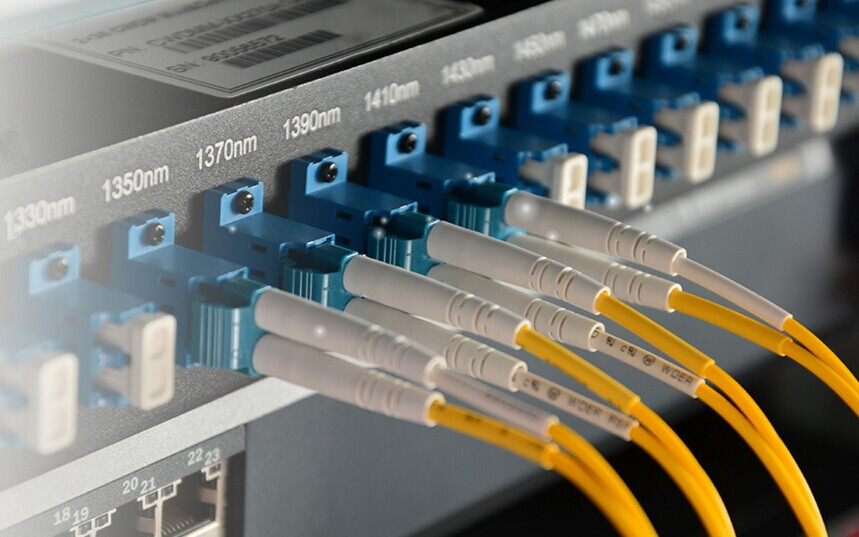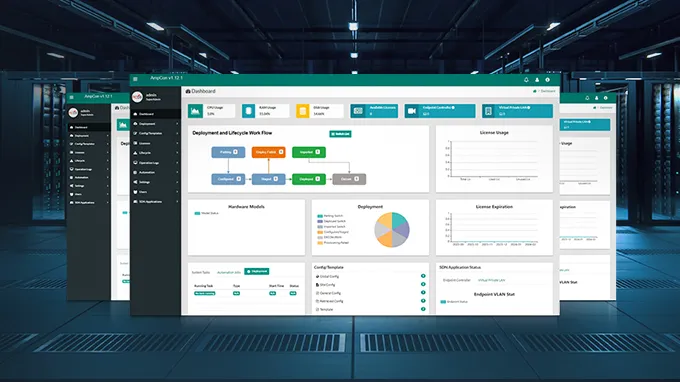How to Build a 10G Network Using an 18CH CWDM MUX DEMUX
CWDM networks are renowned for their ease of deployment and cost-effectiveness, making them widely adopted across various domains. While the data capacity of CWDM networks may not match that of DWDM networks, they are often sufficient to meet the demands of many optical applications. Despite the rapid development of 40G and 100G networks, many networks continue to rely on the basis of 10G networks. Moreover, owing to the prohibitive costs associated with 40G and 100G technologies, 10G networks remain the most prevalent choice for deployment. In this article, we will explore how to build a 10G CWDM network using an 18-channel CWDM Mux Demux.
Cost-Efficient Network Expansion with CWDM Mux Demux
CWDM Mux Demux is a cost-effective solution commonly used to extend the bandwidth capacity of short-distance transmission links (less than 40km). CWDM allows simple and economical transmission of up to 18 channels on a single optical fiber with channel spacing of 20nm. Generally speaking, the more channels there are, the greater the capacity and scalability of the CWDM network.
18CH CWDM Mux Demux Cabling Guide for 10G Network
Build a 10G network with a 18CH CWDM Mux Demux delivers prominent advantages with reduced cost and improved efficiency. All you need is just 10G switches, 18CH CWDM Mux Demux, 10G CWDM SFP+transceivers (or 10G CWDM XFP, if the switch is with XFP interfaces) and fiber patch cables. The typical architecture of a 10G CWDM network is demonstrated in the picture below. Let’s take a review of the four key elements required for a successful implementation of 10G CWDM network.

18 Channel CWDM Mux Demux
A 18 channel CWDM Mux Demux utilizes all of the 18 CWDM wavelengths defined by standards, which integrates up to 18 different wavelength signals into a single optical fiber. The 18 CWDM wavelength channels are combined together in a multiplexer so that it can be transported simultaneously over a single dark fiber. FS.com passive 18CH CWDM Mux Demux is equipped with a monitor port for better CWDM network management. For more detailed information about ports on WDM Mux and Demux, you can refer to the following: "Ports on WDM Mux and Demux: What You Need to Know."

10G SFP+ CWDM Transceiver Module
A wavelength-specific optical transceiver (SFP, SFP+, XFP, etc.) can be directly connected to a data or storage switch. It provides up to 18 discrete CWDM wavelengths, with each wavelength capable of serving as an independent traffic channel. These channels support various Ethernet speeds, including 100/40/10/1G. At FS.com, we also offer rigorously tested 10G CWDM transceivers that are fully compatible with leading brands in the market. Our 10G CWDM transceivers undergo real-world testing to ensure superior performance and reliability. The table below lists standard CWDM SFP+ transceivers compatible with 18ch CWDM Mux Demux configurations.
|
Wavelength
|
20km CWDM SFP+
|
40km CWDM SFP+
|
|---|---|---|
|
1270 nm
|
||
|
1290 nm
|
||
|
1310 nm
|
||
|
1330 nm
|
||
|
1350 nm
|
||
|
1370 nm
|
||
|
1390 nm
|
||
|
1410 nm
|
||
|
1430 nm
|
||
|
1450 nm
|
||
|
1470 nm
|
||
|
1490 nm
|
||
|
1510 nm
|
||
|
1530 nm
|
||
|
1550 nm
|
||
|
1570 nm
|
||
|
1590 nm
|
||
|
1610 nm
|
LC-LC Fiber Optic Patch Cable
The transceiver modules and CWDM multiplexer ports are labelled with the discrete wavelength channels. And fiber patch cable, usually an LC-LC patch cable is used to bridge the transceiver and the corresponding channel on the CWDM Mux/Demux. The ports on CWDM Mux Demux module are colored in the diagram to highlight the different colored wavelength channels. LC-LC fiber patch cables are usually yellow. Besides, there are also specially-made fiber patch cables available for demanding application scenarios, including bend insensitive fiber patch cable, uniboot fiber patch cable and ultra low loss LC patch cable.

Line Fiber
The “dark fiber” linking the sites or data centers. Without access to dark fiber, there is no opportunity to build a dedicated fiber network.
Conclusion
With the help of 18 channel CWDM Mux Demux, 10G network has become approachable and affordable with less labor-intensified work and deployment costs. Besides, a CWDM system also enables unsurpassed flexibility to get fully prepared for any capacity expansion in the future. FS.com is one of the featured vendors to provide a complete solution for optical and enterprise network—your vendor of choice for CWDM Mux network, optical transceiver modules, fiber patch cables and other network components.
You might be interested in
Email Address

-
PoE vs PoE+ vs PoE++ Switch: How to Choose?
May 30, 2024













